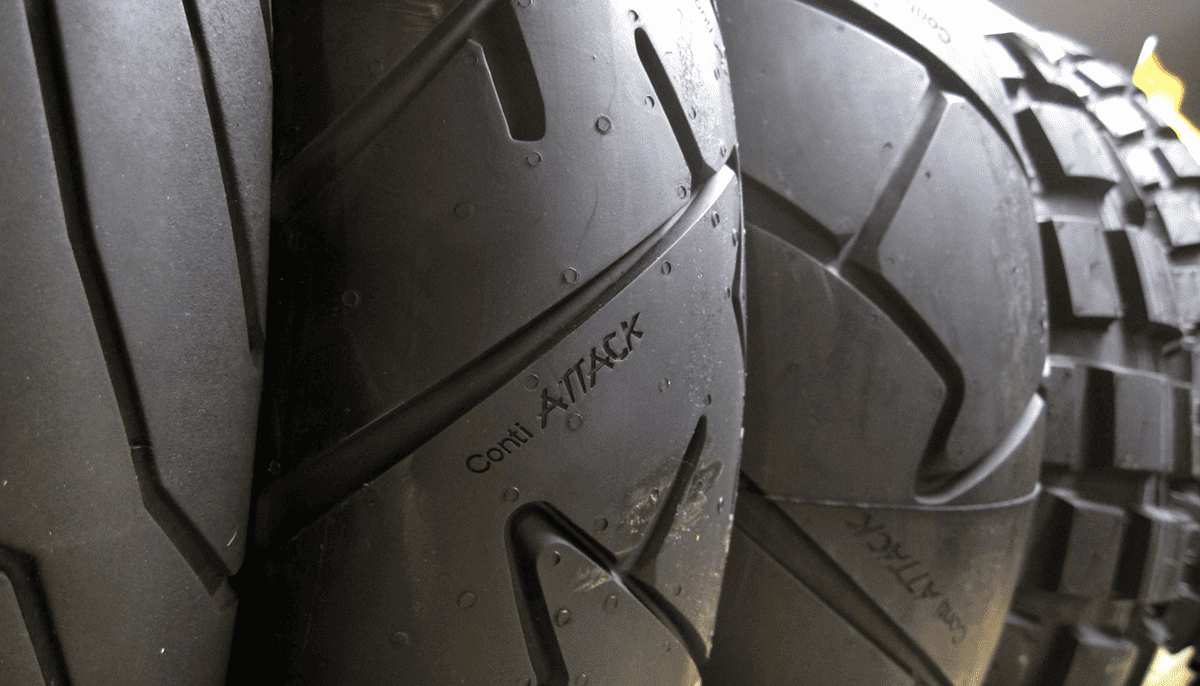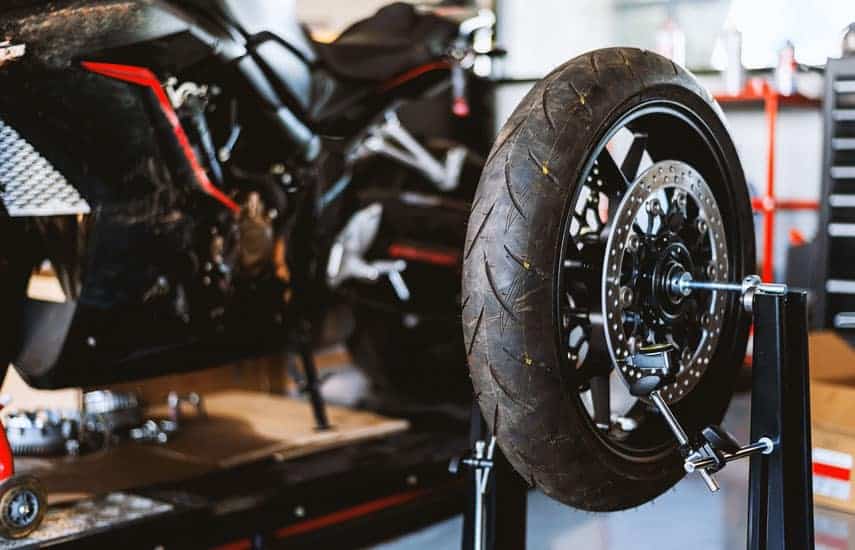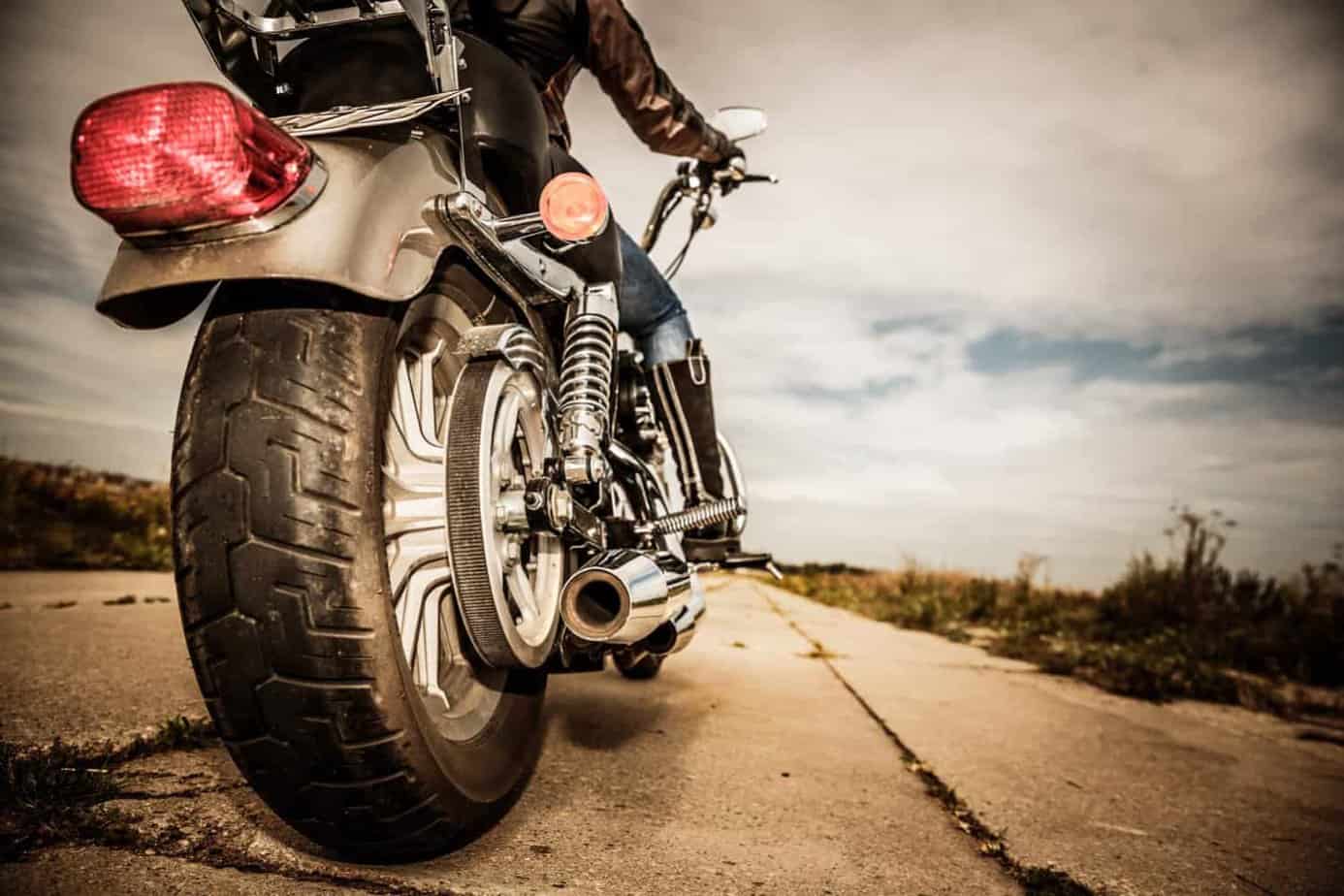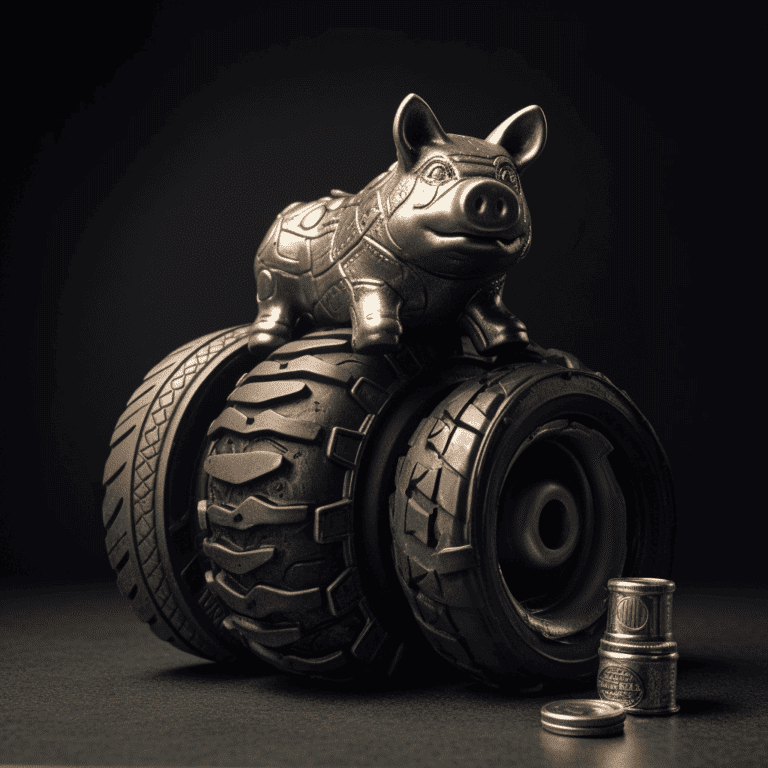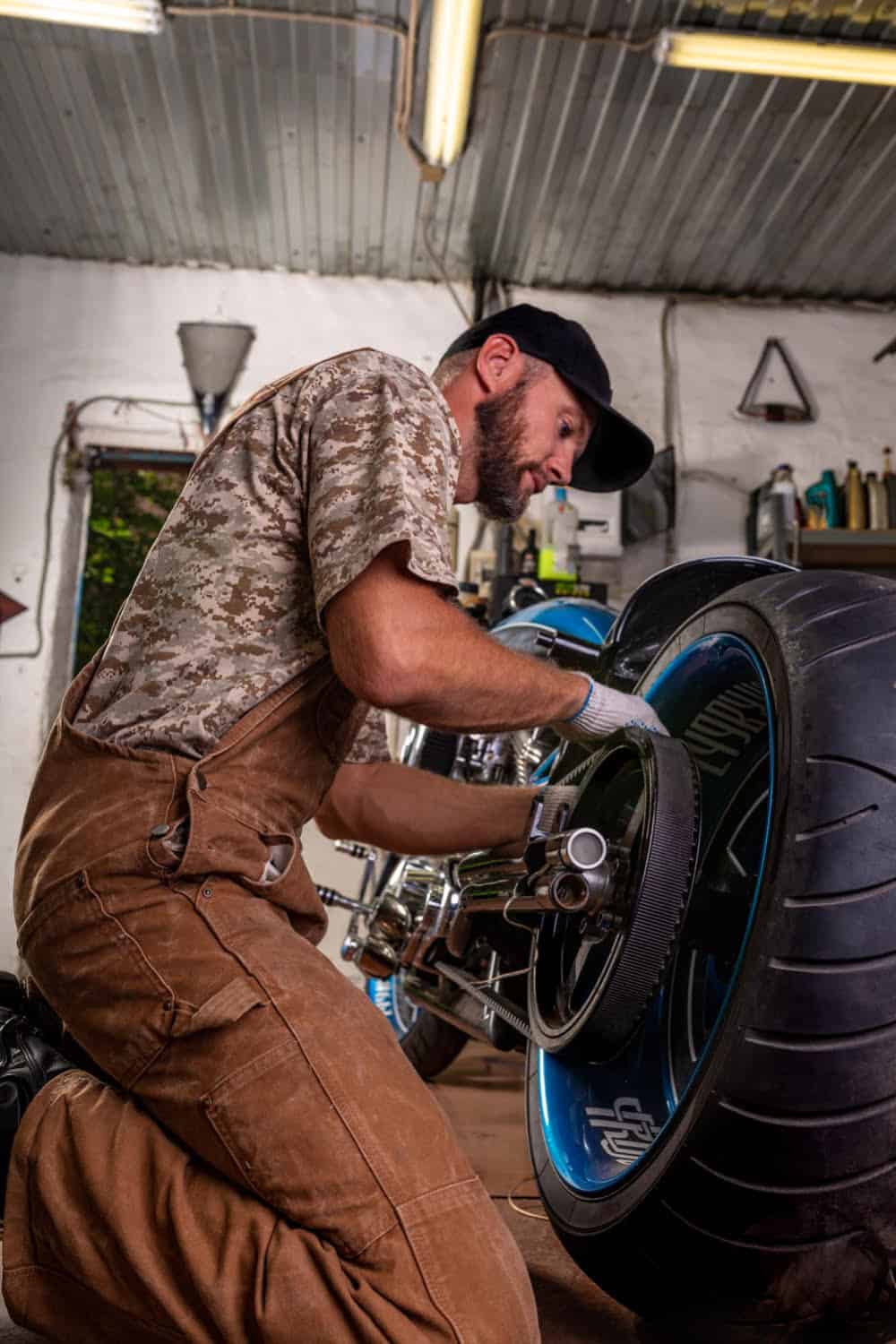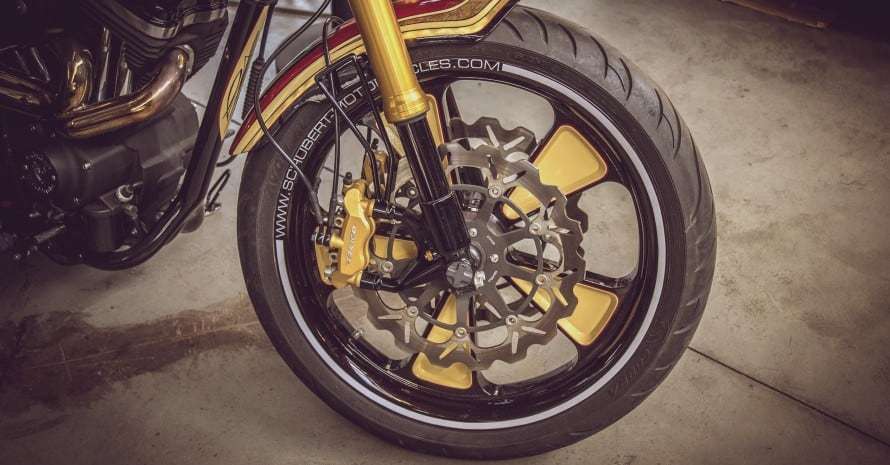As an adventure motorcyclist, it’s essential to understand how to read motorcycle tire size. Knowing the basics of this information can make all the difference when choosing tires for your bike and ensure a safe ride. From understanding what each number means in a tire size code, to selecting the right type of tire for your riding style, we’ll cover everything you need to know about reading motorcycle tire sizes here. So join us as we dive into exploring how best to choose and maintain tires that will keep you on track during any journey.
Table of Contents
Understanding Motorcycle Tire Size
The code inscribed on a motorcycle tire is composed of numerals and letters that indicate the characteristics, measurements, and abilities of the wheel. Knowing how to read this code can help you select the right tires for your bike model.
What is a Motorcycle Tire Size? A motorcycle tire size consists of three sets of numbers or letters separated by slashes (e.g., 120/70ZR17). The first numeral denotes width in mm; the second, ratio of height to breadth; and third, a range of data such as wheel diameter, construction type, speed rating & load index.
How to Read a Motorcycle Tire Size:
The first number before the slash represents width in millimeters from sidewall edge to sidewall edge when mounted on an appropriate rim width. The second number after slash is aspect ratio which represents height as percentage of section width (i.e., 70% x 120mm = 84mm). After that comes letter(s) indicating construction type (e.g., R=radial), wheel diameter (e.g., 17”), speed rating (e.g., Z=over 149mph), load index (the higher it is – greater capacity) & other features like Run Flat Technology etc
Selecting the right tires for your motorcycle can be a tricky endeavor, but by being aware of the fundamentals concerning tire size you can make an educated decision. Choosing the right tire size is essential to ensuring that your ride remains safe and enjoyable.
Choosing the Right Motorcycle Tire Size
When it comes to motorcycle tires, choosing the right size is essential for safety and performance. Considering various elements is key to opting for a tire size that meets your requirements.
The first factor to consider is the type of riding you plan on doing. For off-road or tricky surfaces, wider tires are usually advised as they supply better grip and steadiness. However, if you’ll mostly be using your bike for street riding, then narrower tires may be more suitable since they offer less rolling resistance which helps improve fuel efficiency and reduce wear on the engine components.
Another important factor is wheel size compatibility; some sizes are only compatible with certain wheel diameters so make sure to check before purchasing new tires. Additionally, many producers have precise suggestions for their products; thus, it is prudent to look into any available data from them prior to buying.
Ultimately, various tire sizes can bring along different advantages such as enhanced maneuverability or more traction in wet conditions – these should be taken into consideration when choosing the right size for your requirements and desires. Bigger rims usually require greater air pressure compared to smaller ones because of their capacity for more weight, so remember this when picking a tire size.
Assessing dissimilar makes and types of motorbike tires can facilitate limit your selections even more by providing you the ability to observe how each fares in assorted road conditions and temperatures. This way, you can pick out the perfect set of rubber for your ride. Additionally, most online retailers offer reviews from previous customers who have purchased particular products. Reading through these reviews can give insight into how well-suited certain products are based on real-world experience rather than just theoretical data from manufacturers’ websites or brochures.
When selecting the correct tire size for your motorcycle, there are a few factors to take into account. With this knowledge in hand, you can now move on to learning about installing and maintaining your tires for a longer-lasting life.
Tire size can be expressed in millimeters (mm) or inches. Here’s a comparison chart of tire sizes in both units:
| Tire Size | Millimeters (mm) | Inches |
|---|---|---|
| 120/70 | 120 | 4.72 |
| 130/70 | 130 | 5.12 |
| 140/70 | 140 | 5.51 |
| 150/70 | 150 | 5.91 |
| 160/60 | 160 | 6.30 |
| 170/60 | 170 | 6.69 |
| 180/55 | 180 | 7.09 |
| 190/50 | 190 | 7.48 |
| 200/50 | 200 | 7.87 |
| 240/40 | 240 | 9.45 |
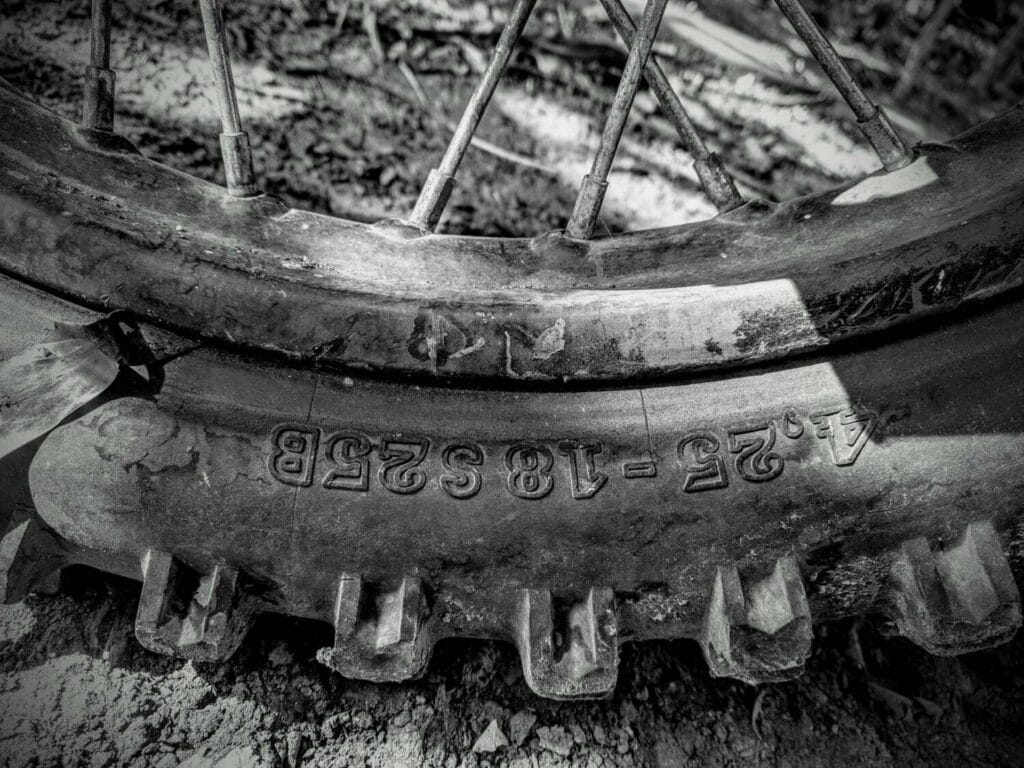
As you can see, tire size in millimeters is a more precise measurement compared to inches. However, inches are still commonly used in many countries, especially in the United States. It’s important to note that the aspect ratio of the tire (the second number in the tire size) remains the same regardless of the unit used, as it represents the height of the sidewall as a percentage of the tire’s width.
The load index
The load index on adventure motorcycle tire ratings is a numerical code that indicates the maximum weight that the tire can safely carry. The load index is standardized and is used by tire manufacturers worldwide. The load index is usually located on the tire sidewall along with other tire information such as the tire size and speed rating.
The load index is represented by a two- or three-digit number, which corresponds to a specific maximum load capacity in pounds or kilograms. The load index for adventure motorcycle tires typically ranges from 50 to 79, with each number corresponding to a specific load capacity.
For example, a tire with a load index of 50 can carry a maximum load of 419 pounds, while a tire with a load index of 79 can carry a maximum load of 963 pounds.
To determine the appropriate load index for an adventure motorcycle tire, riders need to refer to the motorcycle owner’s manual or consult with a professional tire dealer. It’s important to choose a tire with a load index that matches or exceeds the weight of the motorcycle and any additional cargo that will be carried. Using a tire with a load index that is too low can result in premature tire failure and loss of control.
The fabrication process (Bias or Radial)
Radial tires and bias tires are two types of tires used in vehicles, and they differ in their construction, design, and performance characteristics.
A bias tire, also known as a cross-ply tire, has cords that run diagonally across the tire from one bead to the other. The cords are layered in a crisscross pattern, with each layer running in the opposite direction of the layer above or below it. This construction gives the tire a stiff sidewall and a relatively small contact patch with the road. Bias tires are often used in off-road vehicles, as they offer good traction and durability on rough terrain.
On the other hand, a radial tire has cords that run perpendicular to the direction of travel, or “radially,” from the bead to the tread. The cords are layered in a 90-degree angle from the center of the tire to the outer edges. This design provides a larger contact patch with the road, resulting in better handling, improved fuel efficiency, and a more comfortable ride. Radial tires are commonly used in passenger cars, commercial trucks, and motorcycles.
In summary, the main differences between radial and bias tires are in their construction and performance characteristics. Radial tires have cords that run perpendicular to the direction of travel, resulting in a larger contact patch and better handling, while bias tires have cords that run diagonally across the tire, resulting in a stiff sidewall and better off-road durability.
The maximum speed index
Speed rating is a standardized code that indicates the maximum safe speed for a motorcycle tire. It is typically indicated by a letter, which is molded onto the tire sidewall along with other tire information such as the size and load rating.
In motorcycle tires, speed ratings range from J to Z, with each letter corresponding to a specific maximum speed. The speed ratings are as follows:
- J: up to 62 mph (100 km/h)
- K: up to 68 mph (110 km/h)
- L: up to 75 mph (120 km/h)
- M: up to 81 mph (130 km/h)
- N: up to 87 mph (140 km/h)
- P: up to 93 mph (150 km/h)
- Q: up to 100 mph (160 km/h)
- R: up to 106 mph (170 km/h)
- S: up to 112 mph (180 km/h)
- T: up to 118 mph (190 km/h)
- U: up to 124 mph (200 km/h)
- H: up to 130 mph (210 km/h)
- V: up to 149 mph (240 km/h)
- W: up to 168 mph (270 km/h)
- Y: up to 186 mph (300 km/h)
- (Y) or (Z): over 186 mph (300 km/h)
It’s important to note that the speed rating is not a recommendation to exceed the posted speed limit, but rather a rating of the tire’s maximum safe speed under ideal conditions. Other factors, such as load, inflation pressure, road conditions, and weather, can also affect the tire’s performance and safety.
When selecting a tire for a motorcycle, it’s important to choose a tire with a speed rating that matches or exceeds the maximum speed of the motorcycle. Choosing a tire with a lower speed rating than the maximum speed of the motorcycle can compromise the tire’s performance and safety.
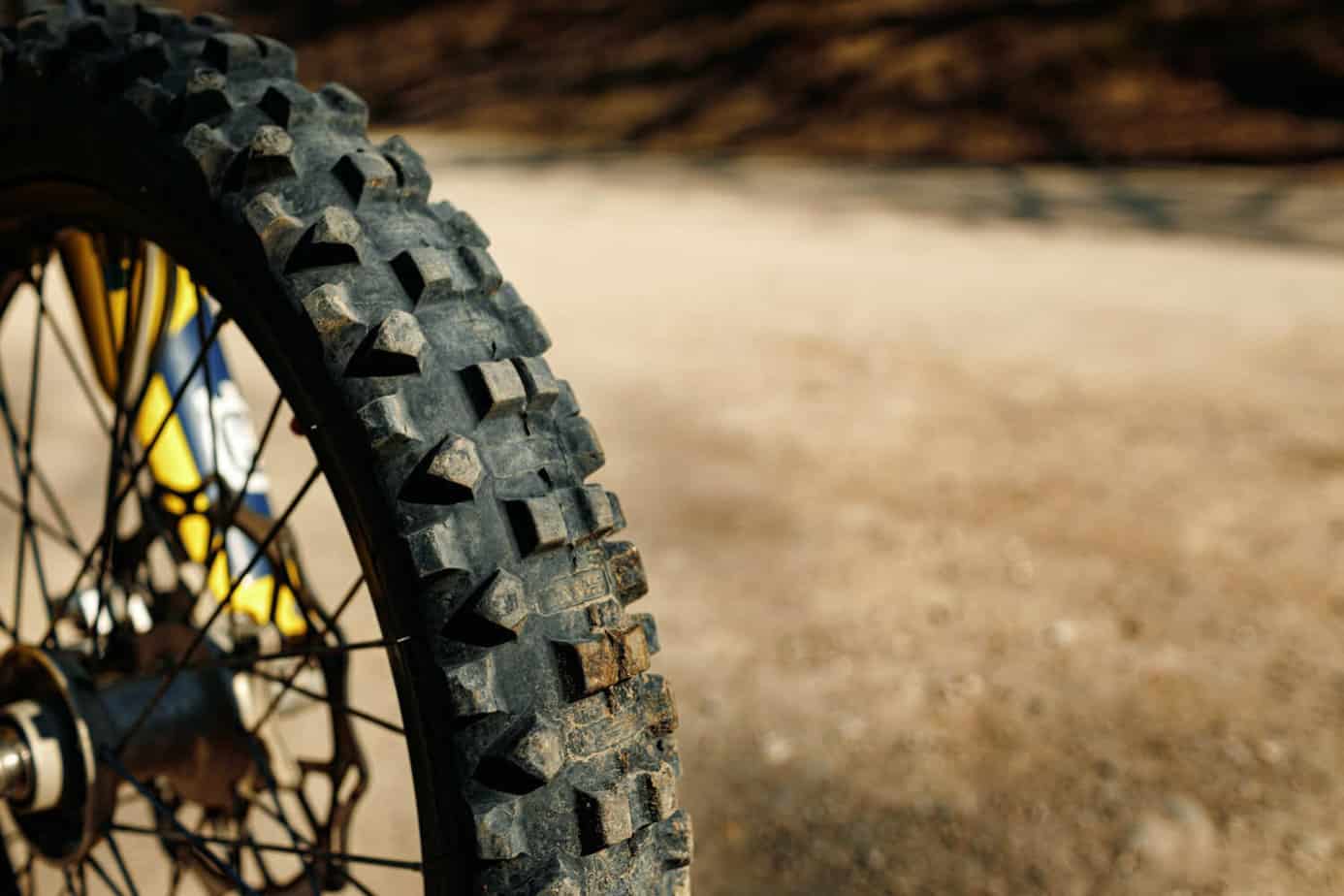
Installing and Maintaining Motorcycle Tires
Proper installation and upkeep of motorbike tires is essential for keeping your two-wheeler in optimal condition. It’s important to know the right tools, steps, and tips for installing and maintaining your tires in order to get the most out of them.
To install or repair a tire on a motorcycle, you will need several tools such as tire irons, rim protectors, valve stem core removers/installers, bead breakers, air compressors with pressure gauges and lubricants. These include a tire iron (or two), rim protector, valve stem core remover/installer tool, bead breaker tool, air compressor with pressure gauge, tire lube or bsoap solution for lubrication when mounting the new tire onto the wheel rim. You may also want to have some rags handy as well as an impact wrench if you plan on doing any heavy-duty work such as removing lug nuts from wheels that have been over tightened.
Once you have worked out the correct tire size from your vehicle manual or measured existing tires, it is time to look for quality brands such as Bridgestone and Dunlop. These manufacturers offer radial bias-ply off-road styles suitable for different terrains; they are identified by their load rating speed index numbers printed along their sidewalls, which must correspond with wheel diameter width aspect ratio height measurements taken from rims sizes listed in millimetres, inches, centimetres, etcetera per manufacturer specs matched up with specific tube type requirements. After the mounting procedure completion, inflate air pressures should be measured prior to heading out onto open roads. As a final check, an inspection of all components is recommended before taking the plunge and going for a spin. Keywords: Tire Size, Reputable Manufacturers, Load Rating Speed Index Numbers, Wheel Diameter Width Aspect Ratio Height Measurements, Millimeters Inches Centimeters Manufacturer Specs, Tube Type Requirements, Mounting Procedure Completion Inflate Air Pressures Inspection Components Plunge Spin
In addition to proper installation techniques mentioned above, there are other things riders can do to prolong the life expectancy of their rubber treads such as avoiding sharp turns, hard braking, sudden accelerations, potholes, gravel roads, wet surfaces etc. All of these put extra strain and wear and tear on the tires which can damage them and shorten their lifespan prematurely requiring premature replacement costing more money in the long run. Be prudent, stay within the speed limit and abide by traffic regulations to ensure a safe and enjoyable journey. Happy trails.
Properly installing and maintaining motorcycle tires is essential for a safe and enjoyable ride. Safety tips should be taken into consideration when riding with new tires, such as breaking in the tire properly, adjusting speed and cornering accordingly, and checking air pressure regularly.
Safety Tips for Riding with New Tires
When riding with new tires, safety is paramount. To ensure a safe and enjoyable ride, it’s important to understand how to break in your new tires properly, adjust speed and cornering with them, and check air pressure regularly.
Breaking in New Tires Properly:
When you first install your new tires, it’s important to take the time to “break them in” by gradually increasing your speed over several rides. This will help the rubber compound settle into its optimal shape for better grip on corners and improved handling overall. At first, take it easy and cruise at a low speed of around 25-30 mph for about 10 minutes before gradually upping the velocity until you reach typical riding speeds.
Soft tires offer more grip, but their shorter lifespan necessitates the need to adjust speed and cornering when new ones are installed. For example, soft compound tires provide more grip but wear out faster than harder compounds that last longer but don’t offer quite as much traction when cornering at high speeds. As such, it’s important to keep an eye on both tire wear and road conditions when adjusting your speed accordingly while cornering with new tires installed.
Maintaining proper air pressure is essential for the safe operation of any vehicle, including motorcycles equipped with new tires. It helps improve fuel efficiency while also reducing strain on other components like brakes or suspension systems due to uneven weight distribution caused by underinflated or overinflated tires respectively. Check air pressure every few weeks using a reliable gauge; recommended pressures can usually be found inside the owner’s manual of most vehicles including motorcycles fitted with newer models of tire sizes appropriate for their make/model year combination.
Always remember to take the necessary precautions when riding with new tires, as they can be unpredictable and require more attention. Take the necessary steps to make sure your ride is secure by employing various tools and equipment. New tire are often slippyer than old tires. Remember to go slower than usual for the first 30 to 60 minutes. It’s a good idea to take it slow for the first ride.
Accessories to Enhance Your Ride with New Tires
Enhancing your ride with new tires can be made even more enjoyable by adding some helpful accessories, such as tire pressure monitors, tire warmers and tire repair kits. Tire pressure monitors, tire warmers and tire repair kits are all great additions to have when you’re out on the open road.
Tire Pressure Monitors:
Tire pressure is an important factor in maintaining safety while riding. By utilizing a tire pressure monitor, you can be alerted if any of your tires become too inflated or deflated so that the necessary precautions may be taken to ensure safety. Most monitors attach directly to the valve stem and provide real-time updates as well as historical data about each individual tire’s air pressure levels. The Motion Pro is a reliable and very good quality product that will last you a long time.


Tire spoons:
Tire spoons are used to remove the tire from the rim and can also be used to help mount a new tire onto the rim. They are designed to avoid damaging the tire or rim during the process of changing a tire. A set of tire spoons can be lightweight and compact, making them easy to carry in a backpack or saddlebag. The best ones in my opinion are the Motion Pro BeadPro, they are small and lightweight. Check out the price on Amazon, and get them delivered to your door without having to go to the store.




Emergency repair kit
Even if you take all necessary precautions, flat tires still happen occasionally due to sharp objects or other unexpected circumstances while out on a ride. It is always wise to keep a compact yet comprehensive tire repair kit handy just in case something goes wrong during your adventure motorcycling journey so that you don’t get stuck miles away from home with no way back. The kit should include items such as patches, plugs, sealant foam and an inflation device like a CO2 cartridge inflator or mini pump so that you are prepared for anything. I like to stop and go and frankly I have two kits with me all the time, one for the tubeless and one fort tube tires. Check out the nice feature on this link, it’s an essential kit to have.
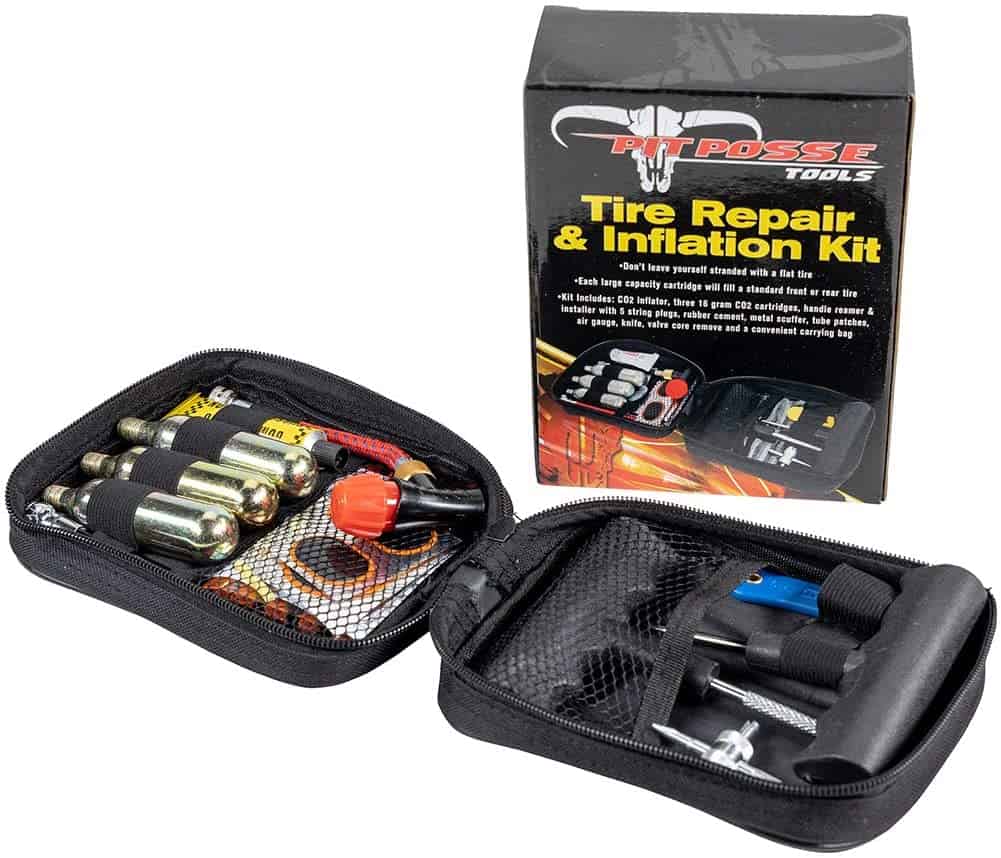

FAQs in Relation to How to Read Motorcycle Tire Size
What does 120 70 zr 17 mean?
120/70 ZR 17 is a size designation for motorcycle tires. The first two numbers, 120 and 70, refer to the width of the tire in millimeters when it is mounted and inflated; 120 being the width and 70 being the aspect ratio or profile height. The letter “Z” stands for maximum speed rating while “R” indicates radial construction. Lastly, 17 refers to the wheel rim diameter in inches that this particular tire fits on. In summary, 120/70 ZR 17 is a tire size designation for motorcycle tires that have a width of 120 millimeters, an aspect ratio or profile height of 70%, maximum speed rating of “Z” and wheel rim diameter of 17 inches.
What does 80 90 17 tire mean?
80/90-17 is a tire size designation that refers to the width, aspect ratio and rim diameter of a motorcycle tire. The 80 indicates the nominal section width in millimeters; 90 is the aspect ratio or height of sidewall as a percentage of the section width; and 17 is the wheel diameter in inches. This kind of tire size is suitable for a range of motorbikes, including those designed for adventure rides, sports biking and touring. It provides good grip while cornering as well as improved stability at high speeds.
What do the letters mean on motorcycle tires?
Motorcycle tires have a variety of letters printed on them that indicate important information about the tire. The first letter indicates the type of tire, such as “R” for radial or “B” for bias-ply. The next two numbers indicate the width in millimeters and aspect ratio (height) respectively. After this is an additional letter indicating speed rating; from lowest to highest these are: J, K, L, M, N, P, Q R S T U H V W Y ZR. Finally there may be other markings like tread wear indicator or traction ratings which provide useful information about how well your motorcycle will perform in various conditions.
Conclusion
Riding with the right tires for your motorcycle is essential to ensure safety and performance. With a little knowledge, you can easily read motorcycle tire size and make sure that your bike has the best fit possible. Don’t forget to check out accessories like rim locks or wheel spacers to enhance your ride even further. No matter what type of tires you have, always prioritize safety when riding your motorcycle.
Learn how to read motorcycle tire size with YourMotoBrol‘s comprehensive guide and become an expert rider! Embrace the adventure of motorcycling today.

Meet Simon, the 46-year-old aficionado behind YourMotoBro. With a lifelong passion ignited by motocross dreams and a Canadian Tire bicycle, Simon’s journey has been nothing short of extraordinary. From coaching underwater hockey to mastering muddy terrains, he’s an authority in thrill and adventure. Certified as an Off-Road Vehicle Excursion Guide and trained in Wilderness First Aid, Simon’s love for bikes is as diverse as his collection—from a robust BMW GSA R1200 to the memories of a Harley Davidson Night Train. By day a respected telephony consultant, by night a motorcycle maestro, Simon’s tales are a blend of expertise, resilience, and undying passion. ?️✨
